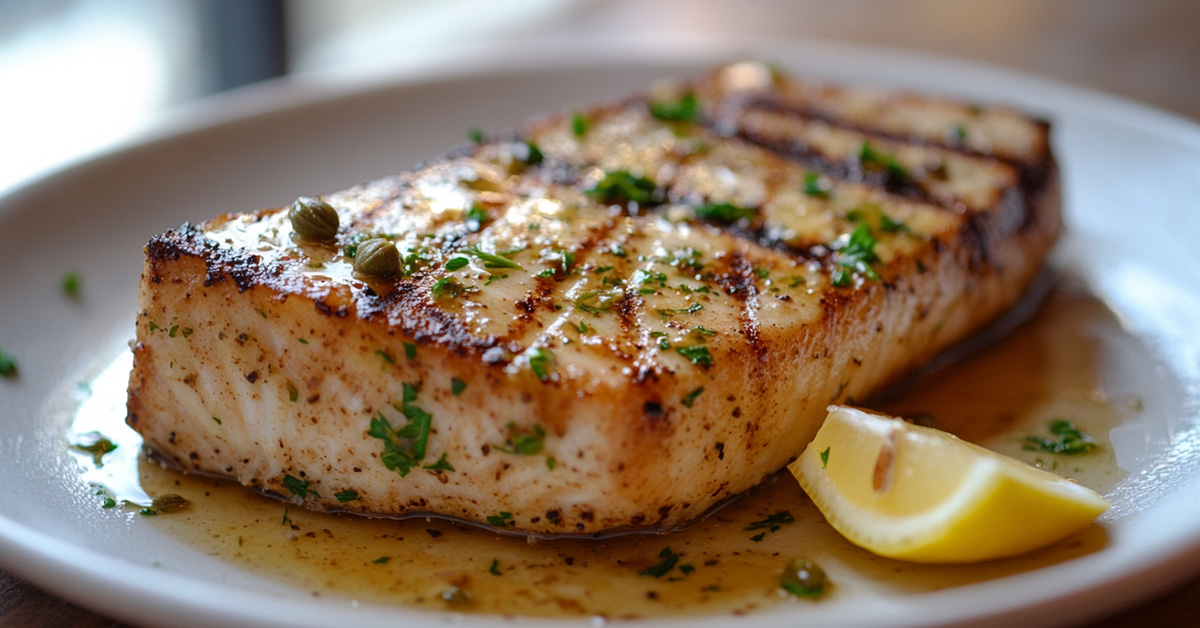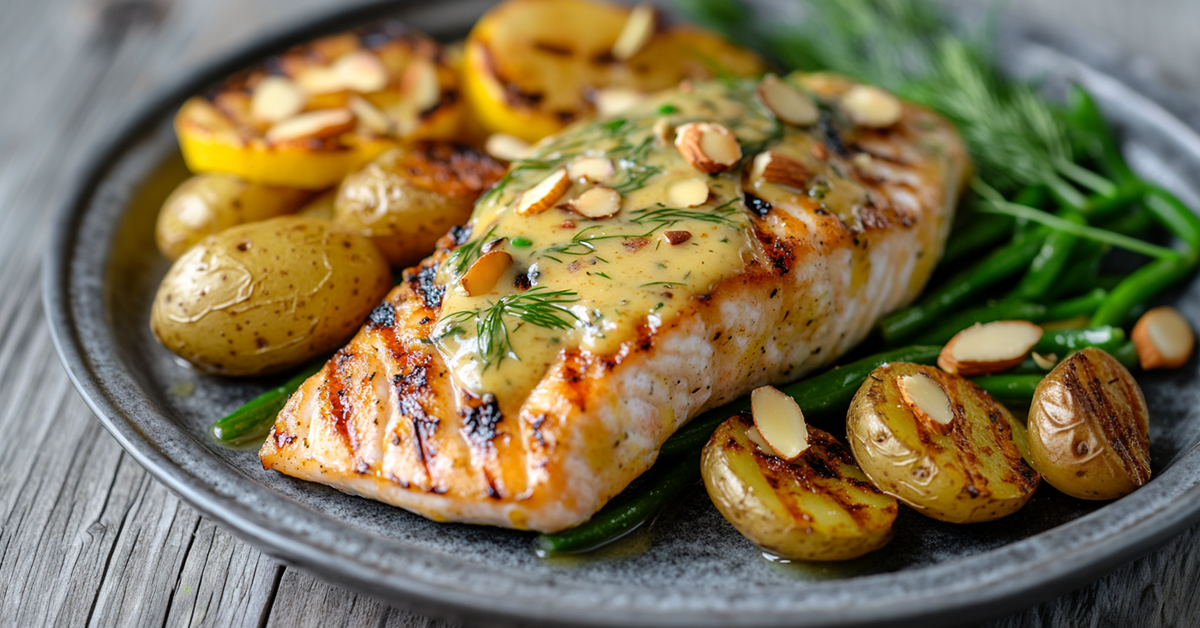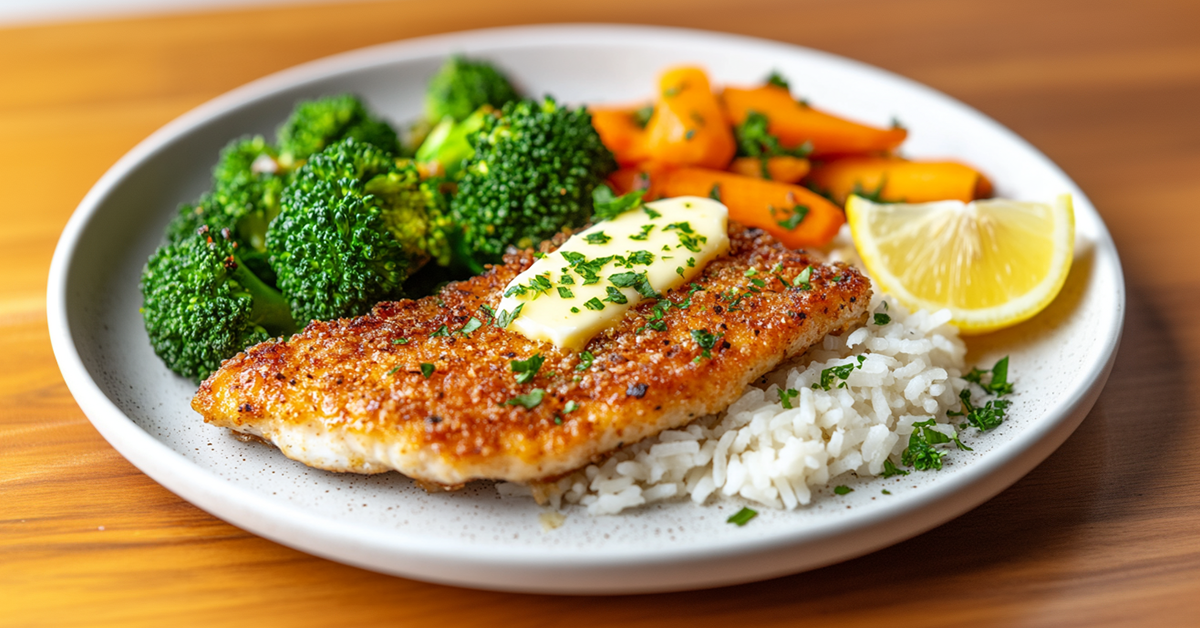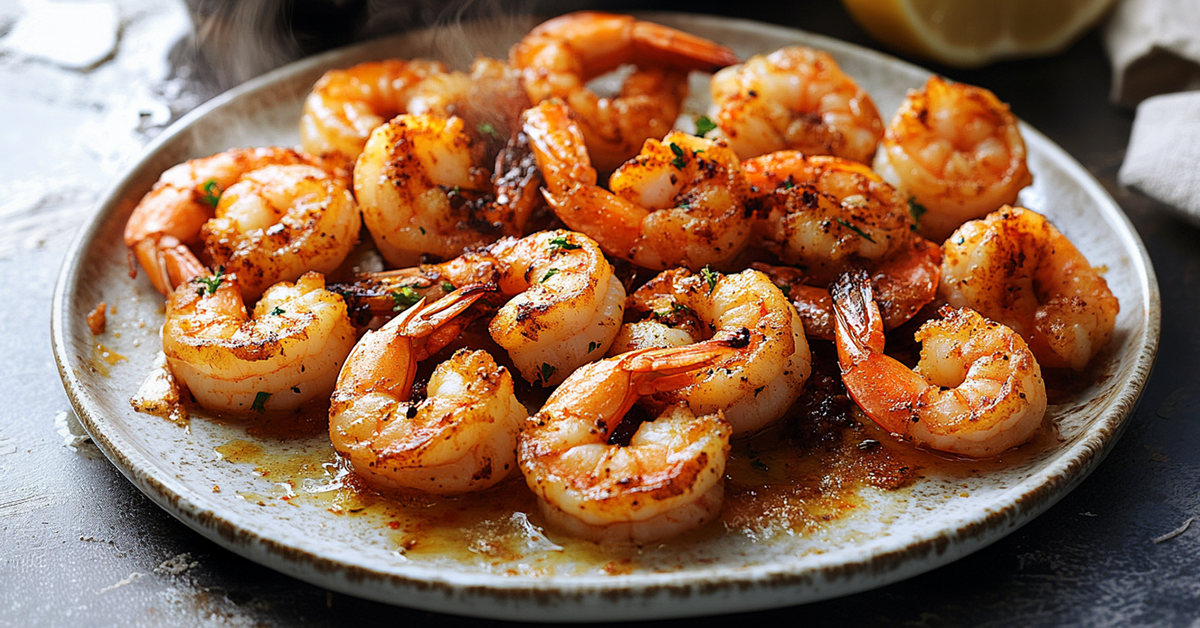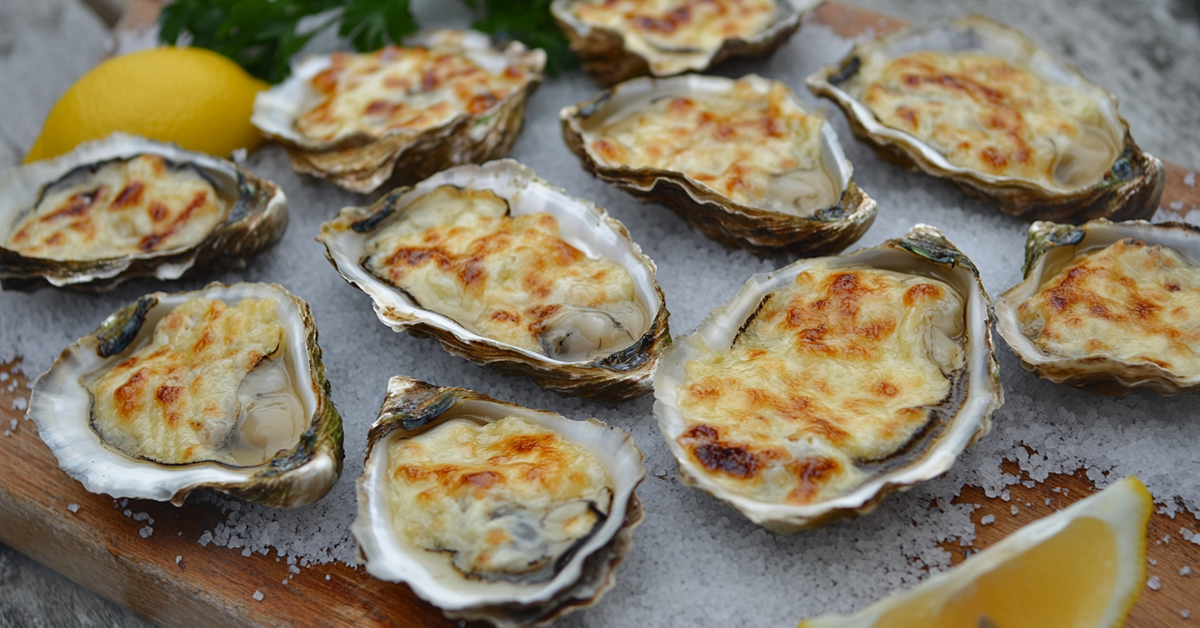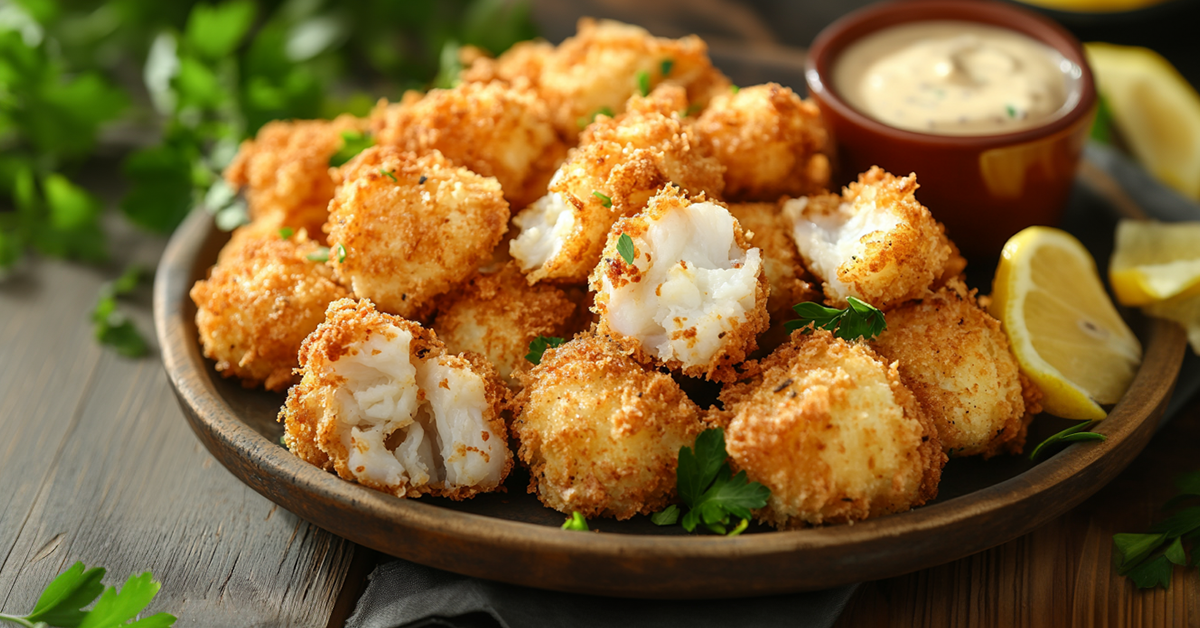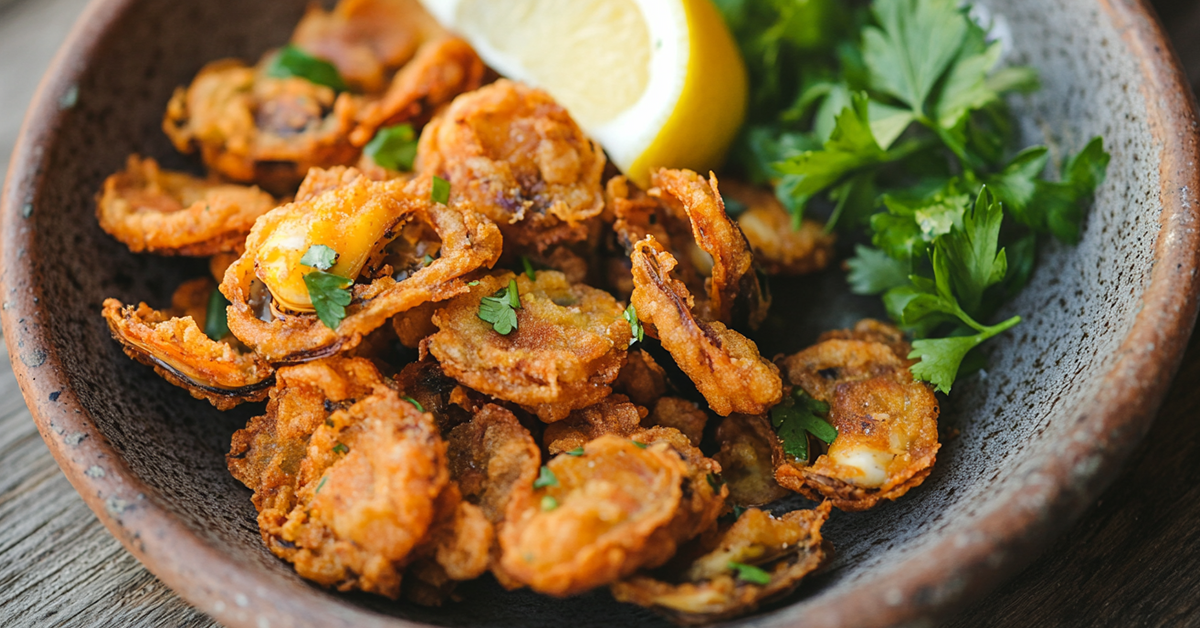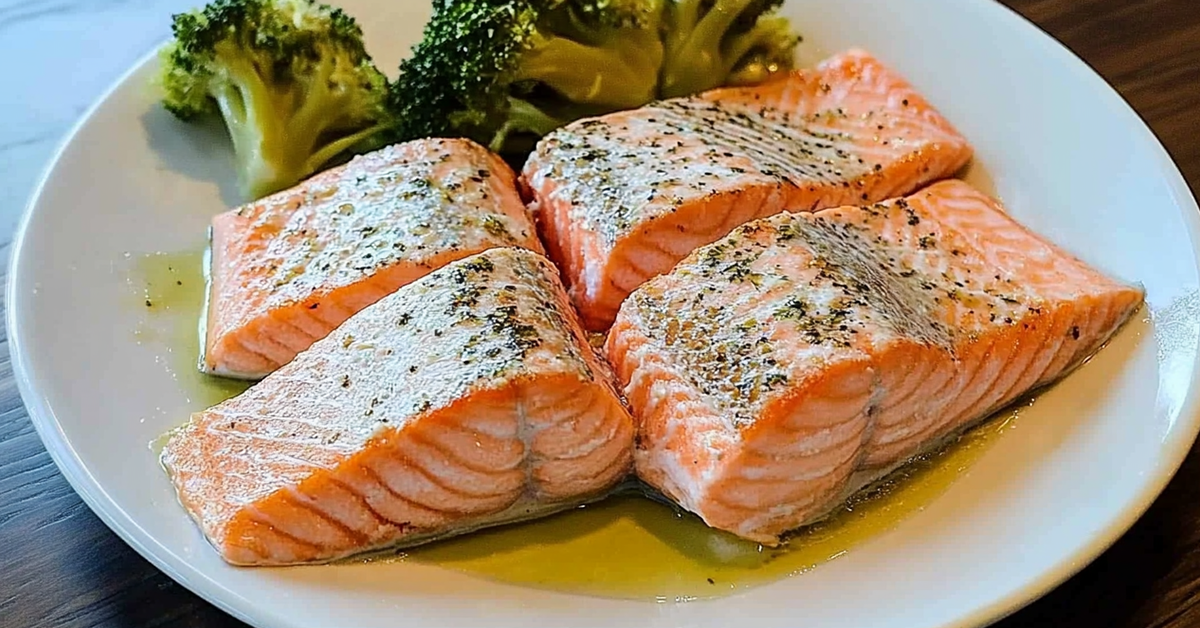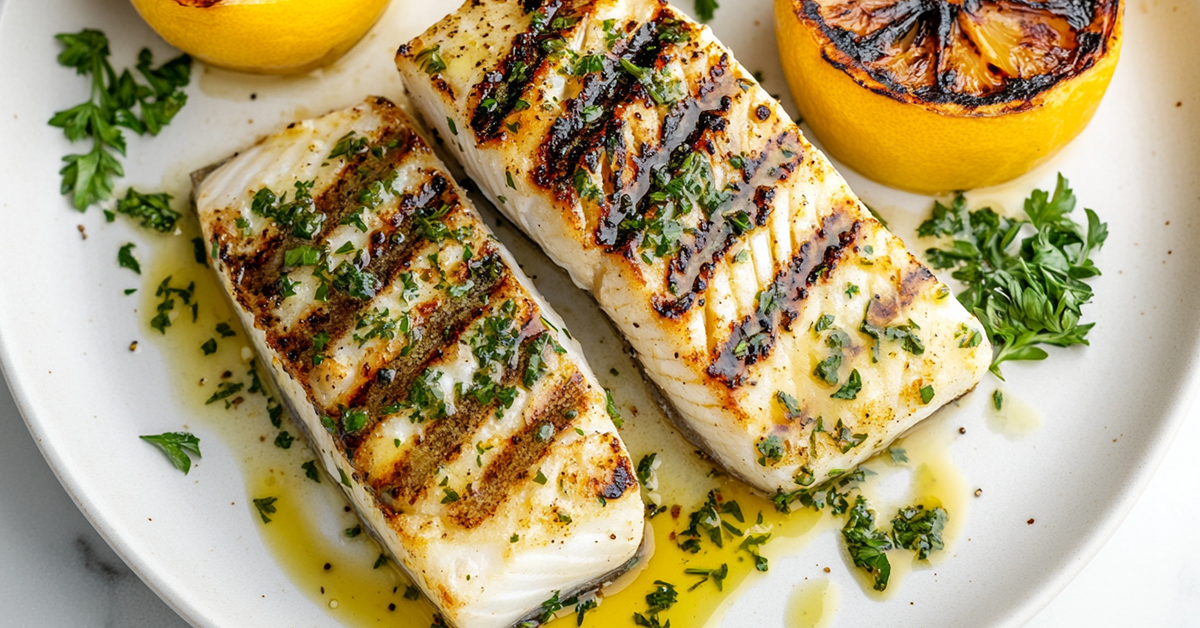Many home cooks find fish preparation daunting. A perfect baked swordfish recipe might be simpler than expected. This fish stands apart from more delicate varieties because it maintains its shape and juiciness when baked correctly.
Baking swordfish in your oven creates endless meal possibilities. This piece guides both seafood cooking beginners and experienced cooks to create restaurant-quality swordfish at home. You’ll discover the right cut selection and ideal temperature settings that lead to perfect results with this versatile fish.
Table of Contents
Why Swordfish is Great for Baking
At the time you’re looking for seafood that’s perfect to bake, swordfish stands out as a top choice for cooks of all skill levels. This fish has unique characteristics that make it a great match for the oven.
Firm texture is the sort of thing I love about swordfish. Unlike flakier fish that can fall apart, it keeps its structure beautifully in the oven. The fish holds together during cooking and proves much more forgiving especially when you have just started handling seafood.
The meaty consistency of swordfish offers some remarkable advantages to baking:
- Keeps moisture exceptionally well during baking
- Absorbs marinades and seasonings effectively
- Stays intact without breaking apart
- Cooks evenly from edge to edge
- Creates a beautiful golden crust in the oven
Picture swordfish as the “steak of the sea” – it’s hearty enough to win over people who usually avoid fish. Its mild, slightly sweet flavor works as an excellent canvas for seasonings and marinades, while its natural taste stays pleasantly distinct.
Swordfish’s uniform thickness makes it ideal for baking. These steaks usually come in consistent, even cuts that will give you even cooking throughout. You won’t face the common issue of overcooked thin sections and undercooked thick parts that show up with other fish varieties.
Swordfish’s fat content makes it a natural fit for baking. It’s lean enough to be healthy but contains just enough natural oils to stay moist in the oven. You don’t need to worry too much about it drying out, which makes it perfect for newcomers to fish cooking.
Swordfish proves user-friendly in the oven, especially for beginners. It shows clear visual signs during cooking – changing from translucent to opaque with a golden exterior. These signs help you check doneness without guesswork. The cooking time stays predictable and consistent, usually taking 15-20 minutes in the oven, depending on thickness.
Essential Tips for Baking Swordfish
You’ll get amazing results with your baked swordfish recipe by becoming skilled at a few basic techniques. These tips will help you cook restaurant-quality fish right in your kitchen.
Temperature is vital to prepare your swordfish for baking. The fish needs to reach room temperature before cooking – 20-30 minutes on the counter will do the job. This step will give a uniform cooking throughout the thick flesh of the swordfish steak.
Pat it dry before seasoning. Paper towels help remove excess moisture from your swordfish’s surface. This significant step creates that beautiful golden crust you want from oven-baked swordfish.
Your seasoning technique makes more difference than you might expect. Swordfish loves bold flavors, and here’s when to add them:
- Add salt and pepper right before baking
- Brush oil or butter with a light touch
- Load up on herbs and spices
- Add citrus zest before it goes in the oven
- Save the acid (lemon juice) until after baking
Read also: The Art of Salt Baked Fish
Moisture management plays a vital role in perfectly baked swordfish. The fish should stay moist, but excess moisture steams rather than bakes it. A rimmed baking sheet works better than a deep dish because it allows heat to circulate properly.
The ideal oven temperature sits at 400°F (204°C). This heat level cooks the fish through while creating a nice exterior. Cooking time depends on thickness – just measure the thickest part in inches and multiply by 10.
Watch for doneness with care. The swordfish should turn just opaque throughout – tough, dry fish means it’s overcooked. A fork should slide easily into the thickest part and the fish should flake while staying moist.
The fish needs to rest after baking. Give your swordfish 3-5 minutes after it leaves the oven. This helps the juices spread evenly, so every bite stays perfectly moist.
A quick basting during baking adds extra flavor and moisture. Use pan juices or mix melted butter with herbs. The oven door should stay closed as much as possible since frequent opening affects temperature and cooking time.
Read also: Swordfish in Air Fryer Recipe
Tools You’ll Need for the Perfect Baked Swordfish
The right tools can make or break your baked swordfish dish. A well-equipped kitchen will give you the confidence to create something special.
Here’s what you need in your essential baking equipment:
- A sturdy rimmed baking sheet – Its shallow sides help heat flow evenly and catch any juices
- Parchment paper or aluminum foil to prevent sticking and make cleanup easy
- An accurate instant-read thermometer to nail the perfect doneness
- Metal spatula or fish turner to handle the fish safely
- Measuring spoons and cups to season accurately
Your preparation tools will make the job smoother:
- Sharp chef’s knife to make clean cuts
- Cutting board with juice groove to keep your workspace clean
- Paper towels to pat the fish dry
- Pastry brush to spread oil or marinades
- Small bowls to keep seasonings organized
These tools might not steal the spotlight, but they’re vital to creating the perfect baked swordfish. Quality equipment helps you control temperature, moisture, and handle the fish like a pro.
Your temperature management tools need special attention. An oven thermometer can confirm your oven’s actual temperature, beyond its built-in gage. This ensures your swordfish bakes perfectly at 400°F. The instant-read thermometer should show 145°F at the fish’s thickest part.
These extras will help with seasoning and marinating:
- Citrus juicer to squeeze fresh lemon
- Microplane grater to zest citrus and grate garlic
- Glass or ceramic baking dish for marinating
- Kitchen timer to track your progress
Don’t forget about storage and safety:
- Heat-resistant oven mitts to protect your hands
- Cooling rack to rest the fish
- Airtight containers to store leftovers
Note that you probably have many of these tools already. Start with the basics – a quality baking sheet, thermometer, and proper utensils will take you far in your cooking adventures.
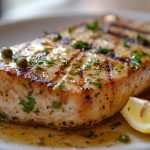
Baked Swordfish Recipe
- Total Time: 25 minutes
- Yield: 4 people 1x
Description
This baked swordfish recipe will revolutionize your kitchen into a Mediterranean bistro. The dish pairs swordfish’s natural richness with bright citrus notes and classic Mediterranean flavors.
A Mediterranean-style baked swordfish awaits you with its meaty texture and light, lemony garlic sauce. The recipe delivers restaurant-quality results with minimal effort, making it perfect for weeknight dinners or special occasions.
Ingredients
- 4 swordfish steaks (6–8 oz each, 1-inch thickness).
- 3 tablespoons olive oil, divided.
- 2 cloves garlic, minced.
- 1 teaspoon dried oregano.
- Fresh lemon juice and zest.
- Salt and pepper to taste.
- ¼ cup flat-leaf parsley, chopped.
- Optional: 1 tablespoon capers, rinsed.
Instructions
- Preheat and Prepare: Set your oven to 400°F (200°C). Use paper towels to pat the swordfish steaks dry.
- Season: Take 1 tablespoon olive oil and brush both sides of the swordfish. Add generous amounts of salt and pepper.
- Prepare the Sauce: Mix remaining olive oil, minced garlic, oregano, and lemon zest in a small bowl.
- Arrange: Place swordfish in a greased baking dish.
- Bake: Let it cook for 12-15 minutes until the fish flakes easily with a fork.
- Finish: Take it out of the oven, drizzle fresh lemon juice, and add chopped parsley.
Notes
Let swordfish reach room temperature before baking to get optimal results.
White and opaque fish indicates it’s done.
Overcooking leads to dry fish.
A 15-minute marinade before baking enhances flavor.
- Prep Time: 10 minutes
- Cook Time: 15 minutes
- Category: Seafood
- Method: Baking
Your swordfish will develop a golden crust while staying moist inside. The lemon-garlic sauce adds brightness and complements the fish’s natural flavors. Check for doneness at the 12-minute mark since cooking time varies with steak thickness.
Variations and Flavor Enhancements for Baked Swordfish
Want to lift your simple baked swordfish recipe? Let’s explore exciting flavor variations that will change this versatile fish into different culinary experiences. Swordfish shines when you know how to use various seasoning profiles while it keeps its distinctive character.
Mediterranean Inspirations You can create a sun-kissed Mediterranean flavor by mixing olive oil with fresh herbs like oregano, thyme, and rosemary. A splash of white wine and capers adds depth. Cherry tomatoes and olives bring brightness to your baked swordfish dish.
Asian-Inspired Marinades These bold flavor combinations add an Eastern twist:
- Soy sauce, ginger, and sesame oil with a touch of honey
- Miso paste blended with mirin and rice vinegar
- Thai-style coconut milk with lemongrass and lime leaves
- Teriyaki sauce boosted with pineapple juice
Herb and Spice Combinations Balanced flavors make perfectly seasoned baked swordfish. Fresh herbs paired with complementary spices work well. Basil and lemon zest create a bright, fresh profile, while sage and garlic give a more robust taste. You might want to try blackened swordfish using a blend of paprika, cayenne, and dried herbs.
Citrus Variations Lemon works great, but other citrus fruits can work too. Orange adds sweetness, lime brings tropical notes, and grapefruit offers a sophisticated tang. Mix citrus zests with butter and herbs to create a compound butter that melts beautifully over your baked swordfish.
Wine-Based Enhancements A splash of wine can boost your baked swordfish recipe substantially. White wine creates a light, bright sauce, and vermouth adds complexity. The wine should be reduced slightly before adding other ingredients to concentrate the flavors.
Seasonal Adaptations Your seasonings should match the calendar. Light, herb-forward preparations work best in summer, while autumn and winter welcome richer, more robust flavors. Fresh dill and cucumber shine in summer, while sage and brown butter work better in cooler months.
Global Flavor Profiles Your taste buds can travel the world with these international inspirations:
- Moroccan: cumin, coriander, and preserved lemon
- Caribbean: jerk seasoning with a hint of allspice
- Italian: sun-dried tomatoes, basil, and garlic
- Spanish: smoked paprika and saffron
Keep in mind that swordfish should marinate for no more than 30 minutes if you’re using acidic ingredients like citrus or vinegar. This prevents the fish from becoming too firm or losing its natural texture. Oil-based marinades can go for up to one hour.
Read also: Baked Rock Fish Recipe
Serving Suggestions for Baked Swordfish
Raise your baked swordfish from a simple dish to an impressive dining experience with smart presentation and matching sides. The right accompaniments can change your perfectly cooked swordfish into a memorable meal that pleases both eyes and taste buds.
Plating with Purpose Your baked swordfish needs warm plates to stay at the perfect temperature. Place the fish as the centerpiece, slightly off-center to catch the eye. A light drizzle of sauce or olive oil around the plate frames your creation beautifully.
Your baked swordfish needs companions that boost its delicate flavors without overpowering them. Here are some complementary side dishes to think over:
- Citrus-dressed arugula salad
- Roasted Mediterranean vegetables
- Herbed quinoa or couscous
- Grilled asparagus with lemon zest
- Sautéed garlic spinach
- Crispy roasted fingerling potatoes
- Wild rice pilaf with herbs
Temperature Harmony The sides should finish just as your swordfish ends its brief rest. Hot sides should stay hot, while cold accompaniments like salads need to be crisp and fresh. These temperature contrasts add depth to your meal.
Sauce Selection Your baked swordfish recipe might include a sauce, but an extra option on the side lets guests customize their meal. A light lemon-caper sauce or herb-infused olive oil works well without masking the fish’s natural flavors.
Garnishing Guidelines Fresh herbs do more than add color – they bring aroma to your plate. A sprig of fresh dill, basil, or parsley works wonders. A lemon wedge adds visual appeal and lets diners adjust the acidity.
Wine Pairing Perfection A well-chosen wine completes your baked swordfish presentation. A crisp Pinot Grigio or unoaked Chardonnay matches the fish’s meaty texture while keeping harmony with its subtle flavors. The wine should be slightly chilled in proper stemware to boost the dining experience.
Family-Style Service Casual gatherings work great with family-style service on a large platter, surrounded by colorful vegetables. This approach creates a welcoming atmosphere and sparks conversation around the table. You can create visual interest by placing the swordfish on a bed of rice or greens.
You may like: Baked Fish with Lemon Cream Sauce
Note that serving goes beyond getting food to the plate – it creates a complete dining experience. Your carefully prepared baked swordfish deserves a presentation that matches the effort you’ve put into cooking it.
Health Benefits of Baked Swordfish
Baked swordfish can transform your approach to healthy eating as a nutritional powerhouse. This lean protein source provides many health benefits, especially when baked instead of fried or cooked with high-fat methods.
Protein Powerhouse Baked swordfish serves as an excellent protein source that supports muscle maintenance and growth. Unlike fatty cuts of red meat, it delivers protein without excessive saturated fats, making it perfect if you have health-conscious eating habits.
Essential Nutrients Baked swordfish delivers a rich array of vital nutrients:
- Omega-3 fatty acids for heart and brain health
- Vitamin B12 for nervous system function
- Selenium for immune system support
- Vitamin D for bone health
- Potassium for blood pressure regulation
- Iron for healthy blood cells
Heart-Healthy Choice Baking swordfish proves to be a heart-smart decision. This cooking method preserves natural omega-3 fatty acids with minimal added fats. These beneficial fats help maintain healthy cholesterol levels and support cardiovascular function.
Weight Management Benefits Baked swordfish recipes complement weight management goals perfectly. High protein content increases satiety, while the lean nature of this fish provides maximum nutrition with minimal calories. Baking needs little to no added fats, which supports healthy eating objectives.
Brain-Boosting Properties Swordfish’s omega-3 fatty acids benefit both heart and brain health. These healthy fats can support cognitive function and help maintain mental clarity as you age.
Muscle Recovery and Growth Baked swordfish provides complete protein with all essential amino acids – perfect for athletes and fitness enthusiasts. This makes it an excellent post-workout meal choice that supports muscle recovery and growth. The body digests and employs this lean protein efficiently.
Immune System Support Swordfish’s selenium content plays a vital role in immune system health. Baking preserves these important nutrients that might otherwise be lost through aggressive cooking methods.
Bone Health Enhancement Swordfish’s vitamin D content improves bone health naturally. This nutrient, which many diets lack, works with the fish’s calcium content to support strong, healthy bones.
Metabolic Benefits B-vitamins in swordfish help the body convert food into energy efficiently. Oven preparation maintains these valuable nutrients while creating a delicious meal that supports metabolic health.
References:
– WebMD
Note that moderation matters when adding swordfish to your diet. Despite its significant health benefits, it works best as part of a varied diet that includes different types of fish and lean proteins.
Nutrition Breakdown of Baked Swordfish
The nutritional profile of baked swordfish can help you plan your meals better. Let’s look at what you get in each serving of this protein-packed dish.
A 6-ounce serving of baked swordfish packs amazing nutritional value without too many calories. Here’s a breakdown of what’s on your plate:
| Nutrient | Amount per 6 oz serving |
|---|---|
| Calories | 250 |
| Protein | 39g |
| Total Fat | 11g |
| Saturated Fat | 2.5g |
| Cholesterol | 80mg |
| Sodium | 125mg |
| Potassium | 780mg |
| Iron | 1.6mg |
The protein-to-calorie ratio makes this recipe stand out. You get 39 grams of protein per serving that meets much of your daily protein needs with relatively few calories. This makes baked swordfish perfect if you’re following a high-protein, moderate-calorie diet.
The fat content in baked swordfish deserves a closer look. Unlike other fatty fish, swordfish has mostly healthy fats, including omega-3 fatty acids. Baking is a big deal as it means that these healthy fats stay intact while keeping added fats minimal.
Your baked swordfish gives you these key micronutrients:
- Vitamin B12: 100% of daily value
- Selenium: 105% of daily value
- Vitamin D: 45% of daily value
- Niacin: 25% of daily value
- Vitamin B6: 15% of daily value
Baked swordfish outperforms other protein sources in several ways. The protein matches lean beef but comes with fewer calories and saturated fats. The vitamin B12 levels are impressive and higher than most other fish.
The mineral content really shines. Selenium, a vital mineral that supports thyroid function and immune system, is abundant. One serving gives you more than your daily needs, making it the quickest way to get this important nutrient.
This dish works well with different dietary plans if you track macros. The protein-to-fat ratio suits both low-carb and moderate-fat diets. With zero carbs, it’s perfect for keto or carb-restricted eating plans.
Oven preparation helps retain nutrients and needs minimal added fats. The recipe keeps the fish’s natural nutritional goodness while maintaining reasonable calorie content. This cooking method will give a maximum nutritional benefit without extras.
References:
– Healthline
– Caloriegallery
Note that nutritional values might vary slightly based on your baking method and choice of marinades or seasonings. But the core nutritional benefits stay the same, making baked swordfish a smart choice for healthy meal planning.
Common Mistakes to Avoid When Baking Swordfish
Swordfish can challenge even experienced cooks when it comes to oven preparation. Let’s look at the significant mistakes that could impact your baked swordfish recipe and learn to avoid them.
Overcooking: The Cardinal Sin Overcooking stands out as the most common mistake with swordfish. This fish differs from others as it quickly becomes dry and pasty when cooked too long. The sweet spot lies at an internal temperature of 135 degrees Fahrenheit to maintain optimal moisture. Some sources recommend 145°F, and finding your preferred point between these temperatures will give a juicy result.
Temperature Missteps Most recipes suggest baking swordfish at 375°F. Here’s a pro tip: your fish will turn out better at 400°F. The higher temperature reduces overall cooking time and helps lock in moisture.
Thickness Matters The best results come from swordfish steaks that measure at least 1-inch thick. Thinner pieces create several problems:
- Risk of overcooking
- Uneven cooking
- Potential breaking when flipped
- Drying out too quickly
Timing Troubles The cooking time should match your filet’s thickness:
- 1-inch thick pieces: 12-15 minutes
- Thinner steaks: Reduce time by 2 minutes
- Thicker pieces: Add 2 minutes
Moisture Management Many believe rinsing swordfish before cooking helps. The truth is, you should never rinse it – just pat it dry to get the cleanest flavor profile. This step helps achieve proper browning and stops unwanted steaming.
Marinating Mishaps Marinating doesn’t always enhance your swordfish. Tests show unmarinated filets can turn out juicier and more tender. Marinating should last only 15 minutes if you choose to do it, as acid can “cook” the fish and make it tough.
Testing for Doneness Color alone won’t tell you if your swordfish is ready. A wooden skewer should slide through the thickest part without resistance. Give it another minute and test again if you feel resistance.
Fresh Fish Selection A great baked swordfish starts with choosing the right piece. Look for:
- Pale cream color with pink tinges
- Firm texture
- No brown spots
- Fresh, ocean-like smell
Temperature Transition Letting swordfish reach room temperature before baking ensures even cooking from edge to center. Many cooks skip this vital step.
Pan Selection Your choice of baking vessel impacts the results. A shallow baking dish or appropriately sized pan prevents overcrowding and helps cook evenly. Deep dishes can trap steam and affect texture negatively.
Note that swordfish contains higher levels of mercury compared to other seafood. Adults can safely enjoy it in moderation, but pregnant women, nursing mothers, and young children should avoid it.
These tips will help you discover the full potential of baked swordfish. The right temperature control, timing, and moisture management can create restaurant-quality results in your kitchen.
You may like: Basa Fish Recipe
Conclusion
Baked swordfish makes an excellent choice for both novice and experienced home cooks. Your success with this versatile fish depends on a few key elements – proper temperature control, careful timing, and appropriate moisture management. The right tools and techniques will help you create restaurant-quality dishes that highlight swordfish’s natural flavors and meaty texture.
Simple approaches often yield the best results. Quality ingredients, proper cooking temperatures, and precise timing matter more than complex marinades or fancy preparations.
Swordfish’s nutritional benefits make it a smart addition to your meal rotation. This fish supports your health goals and satisfies your taste buds with its high protein content, omega-3 fatty acids, and essential nutrients. Moderation is important, especially when you have sensitive groups like pregnant women or young children.
Regular preparation will help you refine your technique. You’ll develop a better sense of timing, seasoning, and doneness indicators each time you cook this dish. Baked swordfish will soon become a reliable star in your cooking repertoire that impresses family and guests alike.

